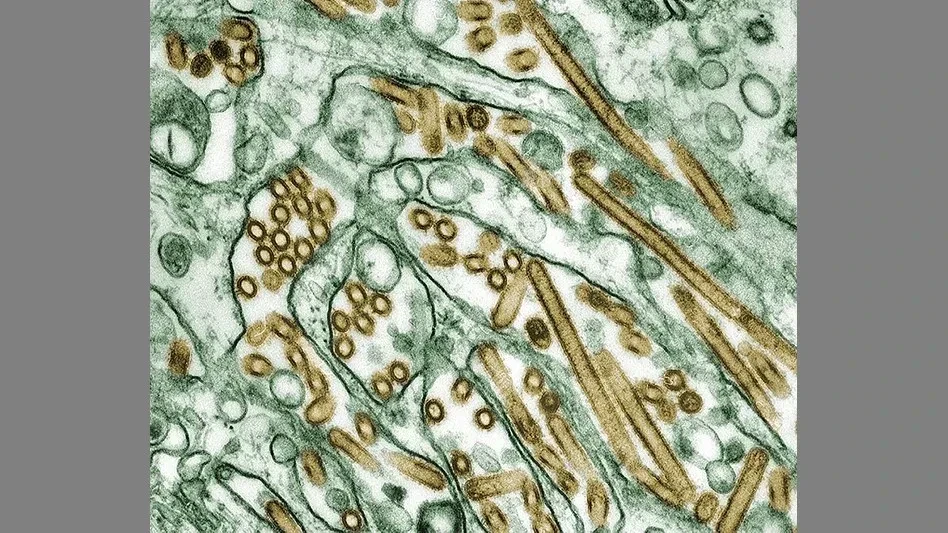Editor's note: This article originally appeared in October 2006 QA magazine as part of the AIB supplement:
In today’s age, we are constantly collecting data. Every time you use a credit card, answer a customer satisfaction survey, or use your grocery discount card, personal data is logged. It seems we have become obsessed with data collection in our personal lives and in our jobs.
This fever that allows us to collect information, conduct trend analysis, and track anything at anytime has created an entire industry with new capabilities. Systems can be designed to track how often you have done a particular task or how often an event takes place. They can also be designed to gather additional information to further refine data and make the search more specific. However, too often we collect data but don’t understand the potential value of the information we diligently collect. We miss opportunities to improve the overall effectiveness and efficiency of our operations.
One way to gain relevant results when collecting data is to consider what is required rather than what is discretionary. Does your data system meet the established value or does it simply justify the expense? If data is not used in a meaningful way that adds value, the exercise of collecting and recording data is a potentially wasted effort.
Very few people are able to recognize patterns from columns of numbers. Even fewer can translate these numbers into an accurate picture of what is actually happening without the assistance of software. There is often a need to create simple graphic representations that the average person can understand so issues can be recognized and solved. Excel graphs or more sophisticated data analysis programs can be used to display information. When presented in a visual format, the significance of the numbers is easily understood and efforts become focused.
Food manufacturing systems have become increasingly complex. Sophisticated systems can be tailored to fit your company’s needs with features, such as bar coding, automated monitoring, real time data harvesting, and trend analysis. But, before you understand the data’s value, you must determine what you want from the data collection system. Ask yourself "How will the data be used?" to determine if the information you are collecting is relevant.
Every department in a food plant collects information by which decisions are made. It is critical to make good decisions based on available information for an effective operation. Asking the correct questions and presenting data in a meaningful way often makes the difference between resolving problems proactively or reactively.
Production should track line performance and product specification compliance to improve overall performance of ingredients. Maintenance should track valuable data concerning the condition and reliability of the equipment and parts, as well as technician performance and cost.
Sanitation should track information about the status of equipment cleaning, failures in schedules, use of materials, qualifications of personnel, and training programs. Pest management services have experienced a phenomenal demand for high tech data collection and reporting systems.
Data SolveS Problems. A moderate size milling company had challenges with lost time in their bagging area. Relying on the opinions of the personnel responsible for that area became blameful rather than problem solving. Everyone had an opinion as to the cause for lost time, but there was no data to confirm their positions.
Due to a cooperative effort between production and maintenance supervisors, an accurate reporting system was designed and implemented to log and track each lost time event. Through careful analysis of the data collected, they identified the real cause for the lost time. The data clearly identified one particular component of their process which was directly responsible for over 70% of the lost time. An old handheld bag sewing unit was no longer reliable because all replacement parts had to be fabricated by maintenance. As a result, the plant purchased a new sewing unit, which created a substantial reduction in lost time. Interestingly, they were also able to identify work performance issues that were corrected by educating personnel on procedures. A cost review showed a return of several thousand dollars from a much smaller investment.
Finding the Source. A processing plant was experiencing problems with red flour beetles. To eliminate the problem, the facility increased the ULV application of pyrethrum. When pheromone traps in the area showed the presence of beetle activity, the application was triggered. To gauge the effectiveness of the applications, more traps were installed. However, the results showed no real increase in the number of insects recovered. A consultant was called to assist. He quickly recognized that the facility had been collecting a substantial amount of data but lacked the ability to interpret and use the information. A data analysis program clearly targeted the beetle occurrences near the area supervisor’s desk. Upon inspecting the unit, an old product sample that had fallen into the base and become infested was discovered. The insects recovered in the area were foraging for alternative food sources. The desk here and in all other departments is now on the Master Cleaning Schedule and the frequent ULV applications have been discontinued. The data provided an immediate and long-term resolution to the issue; it just needed to be understood.
Convince Them the Easy Way. Money always has a very clear voice in business. Unfortunately, we sometimes put a muzzle on it by our lack of understanding. This was very evident in a facility that produced frozen foods for distribution. As this facility grew from a small- to medium-sized operation, it tried to retain its "customer first" philosophy. This attitude resulted in tremendous disruption. The company was so dedicated to its long-term customers that it would change over production when these clients requested a small order of a certain product.
Because their data tracking system had not kept pace with growth, they lacked the ability to realize the function of the plant today was to produce a freezer inventory, not customer orders. Product was being made when sufficient volumes were available in the freezer. The problem was the tracking system was unable to locate the inventory or make personnel aware it existed. This resulted in significant lost production time and additional cleaning due to changeover.
Sometimes excellent production personnel are not business oriented. They may not understand how to determine changeover costs as compared to the cost of uninterrupted production. For this facility, collecting the appropriate data was overwhelming and often not available. By piecing information together from various resources, it was not difficult to convince management to purchase an inventory system that linked to the production scheduling department. Without the data to compare the cost of short run verses long run production, it would have taken far longer to convince management that a change was needed. This simple exercise resulted in further assessments and eventually, co-packing low volume products to improve overall profitability.
An interesting, but anticipated, result was the overall improvement in several aspects of the facility. Fewer mistakes were made related to product formulations and specifications. Downtime was reduced. Working conditions became far less confusing and employee turnover rates decreased. This all amounts to measurable returns on the investment made to control the plant.
These are simple examples of the benefits provided by data collection systems that directly apply to operations. The major reward lies in our ability to analyze the data with a specific objective and get results. The bells and whistles requested in many advanced systems can make the extraction of valuable data increasingly difficult and confusing. We quickly lose the ability to recognize what query to run and what to do with the results. Lacking this ability, the data loses its value. Remember, good data provides for good decisions when it is properly understood.
Latest from Quality Assurance & Food Safety
- Nestlé Opens Arizona Beverage Factory and Distribution Center
- Ingredion Invests $100 Million in Indianapolis Plant to Improve Efficiency, Enable Texture Solutions Growth
- Eagle Unveils Redesigned Pipeline X-ray System
- USDA Invests Up To $1 Billion to Combat Avian Flu, Reduce Egg Prices
- Washington Cats Confirmed with HPAI as Investigation into Contaminated Pet Food Continues
- USDA Confirms Bird Flu Detected in Rats in Riverside
- Kyle Diamantas Named FDA’s Acting Deputy Commissioner for Human Foods
- QA Exclusive: Food Safety Leaders React to Jim Jones’ Departure, FDA Layoffs





